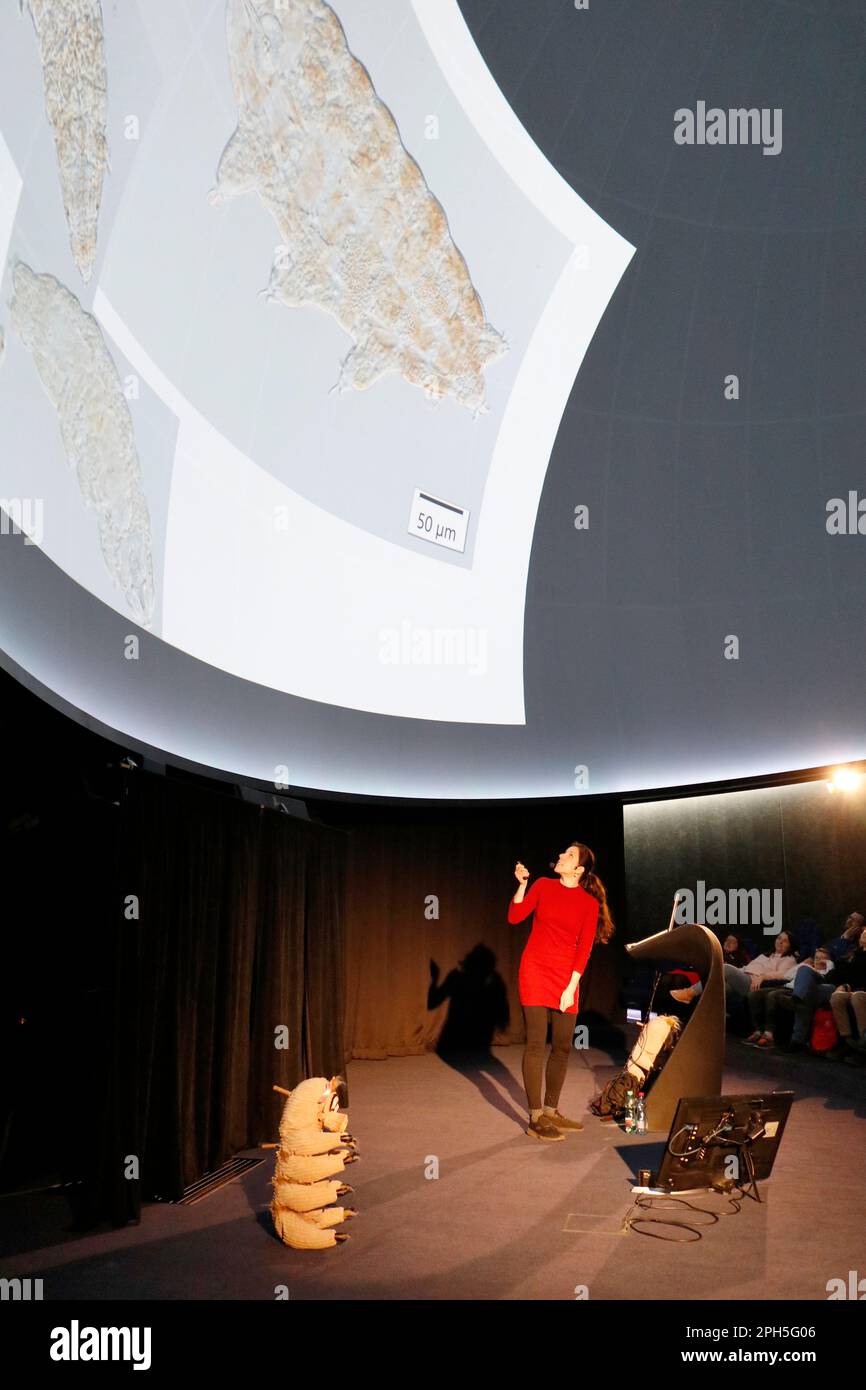During the opportunity to present an insight into a microworld full of fantastic creatures during the ongoing "Days of Electron Microscopy in Brno" in

Image details
Contributor:
CTK / Alamy Stock PhotoImage ID:
2PH5G06File size:
68.7 MB (1.7 MB Compressed download)Releases:
Model - no | Property - noDo I need a release?Dimensions:
4000 x 6000 px | 33.9 x 50.8 cm | 13.3 x 20 inches | 300dpiDate taken:
25 March 2023Photographer:
CTKMore information:
During the opportunity to present an insight into a microworld full of fantastic creatures during the ongoing "Days of Electron Microscopy in Brno" in the Planetarium of the Brno Observatory on Saturday the 25th of March 2023, Michala Tumova (pictured), from the Institute of Soil Biology of the Biological Centre of the Academy of Sciences of the Czech Republic, lectured for children and adult audiences about tardigrades. Tardigrades (colloquially known as "water bears"), Latin Tardigrada, are small invertebrates that inhabit aquatic and semi-aquatic habitats (especially wet mosses and lichens). The German zoologist Johann Goeze described them in 1773 as Kleiner Wasserbar (little water bear). The Latin name Tardigrada, coined in 1977 by Italian biologist Lazzaro Spallanzani, is a compound of two words: tardus = slow and gradus = step. They are also called slang for "moss piglets". They are found all over the world and are currently approximately 1 300 species of these amazing creatures described, but the total number is estimated at more than 10 000. Under unfavourable circumstances, tardigrades fall into a condition called cryptobiosis. This makes them extremely resistant to external influences. The range of temperatures they can withstand is from -273°C to +150°C, and they can survive for decades when frozen. They can also withstand a vacuum or pressure 6 times higher than that at the bottom of the deepest ocean. Some have been found even in volcanic vents. After being released into free space without any protection, most have survived unscathed. (CTK Photo/Weber Pavel)